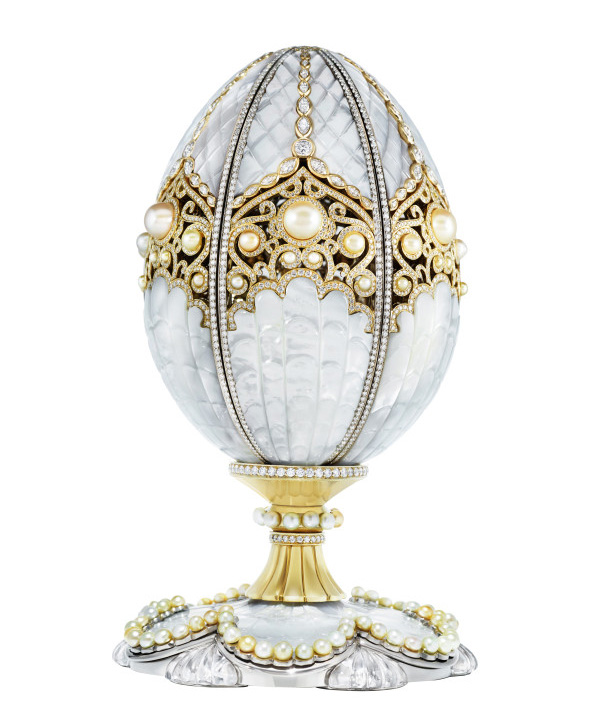How Are Diamonds Made? Natural vs Lab-Created Explained
Two Paths, One Diamond Not all diamonds come from the same place — but they all start the same way. Pure carbon, crystalized under immense pressure and heat. Whether it…

Iconic jeweler Fabergé has revived its tradition of creating jeweled eggs as objets d’art with its new Fabergé Pearl Egg. The pearl egg is the first of Fabergé’s “Imperial Class” of jeweled eggs created since 1917. The egg was designed in collaboration with the Al-Fardan family, renowned pearl collectors.
From Fabergé:
The Fabergé Pearl Egg draws inspiration from the formation of a pearl within an oyster, and the egg’s painstakingly-crafted mother-of-pearl exterior opens to reveal a unique grey pearl of 12.17 carats, sourced from the Arabian Gulf and exhibiting exceptional purity and a highly unusual shade of grey.
Harnessing 20 highly skilled workmasters, the objet embodies 139 fine, white pearls with a golden lustre, 3,305 diamonds, carved rock crystal and mother-of-pearl set on white and yellow gold. Each pearl adorning the Fabergé Pearl Egg was hand-selected by Hussain Ibrahim Al-Fardan from his private collection. An ingenious mechanism enables the entire outer shell to rotate on its base, simultaneously opening in six sections to unveil its treasure.
The Pearl Egg is accompanied by a sumptuous Fabergé necklace of white pearls, diamonds and mother of pearl featuring a scallop motif, and finished with an exquisite 19.44 carat white pearl drop.
Fabergé’s Imperial Easter Eggs are among the most iconic jeweled artworks in the world. The first Imperial Easter Egg was commissioned in 1885 by Tsar Alexander III to give his wife Empress Maria Feodorovna. After the first egg’s creation, an Imperial tradition was born, a tradition that continued until 1917 when the last two eggs were commissioned.
Related:
$33 Million Fabergé Egg Found at Flea Market to Go on Display in London
Fabergé to Unveil New Jeweled Egg Collection